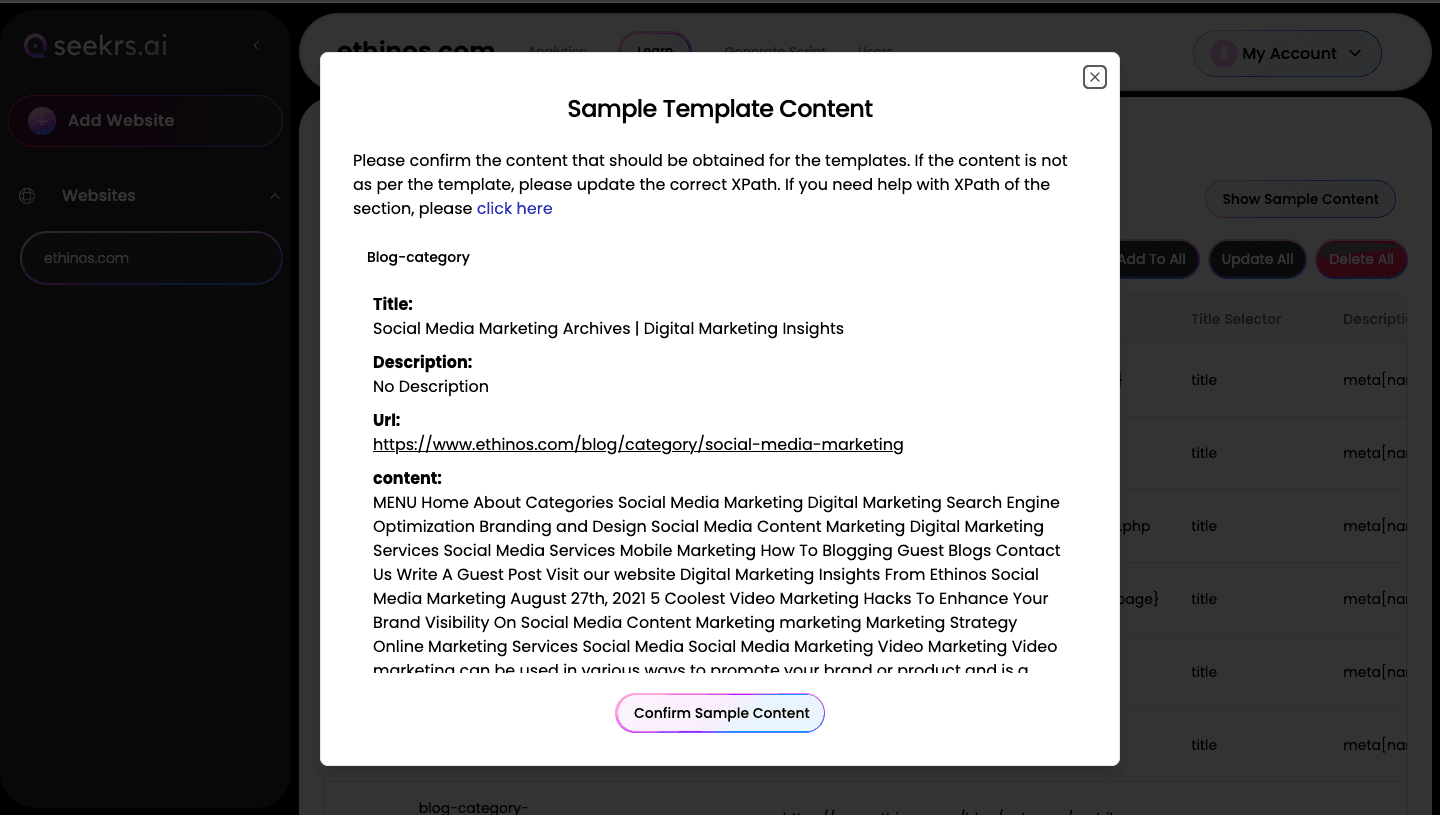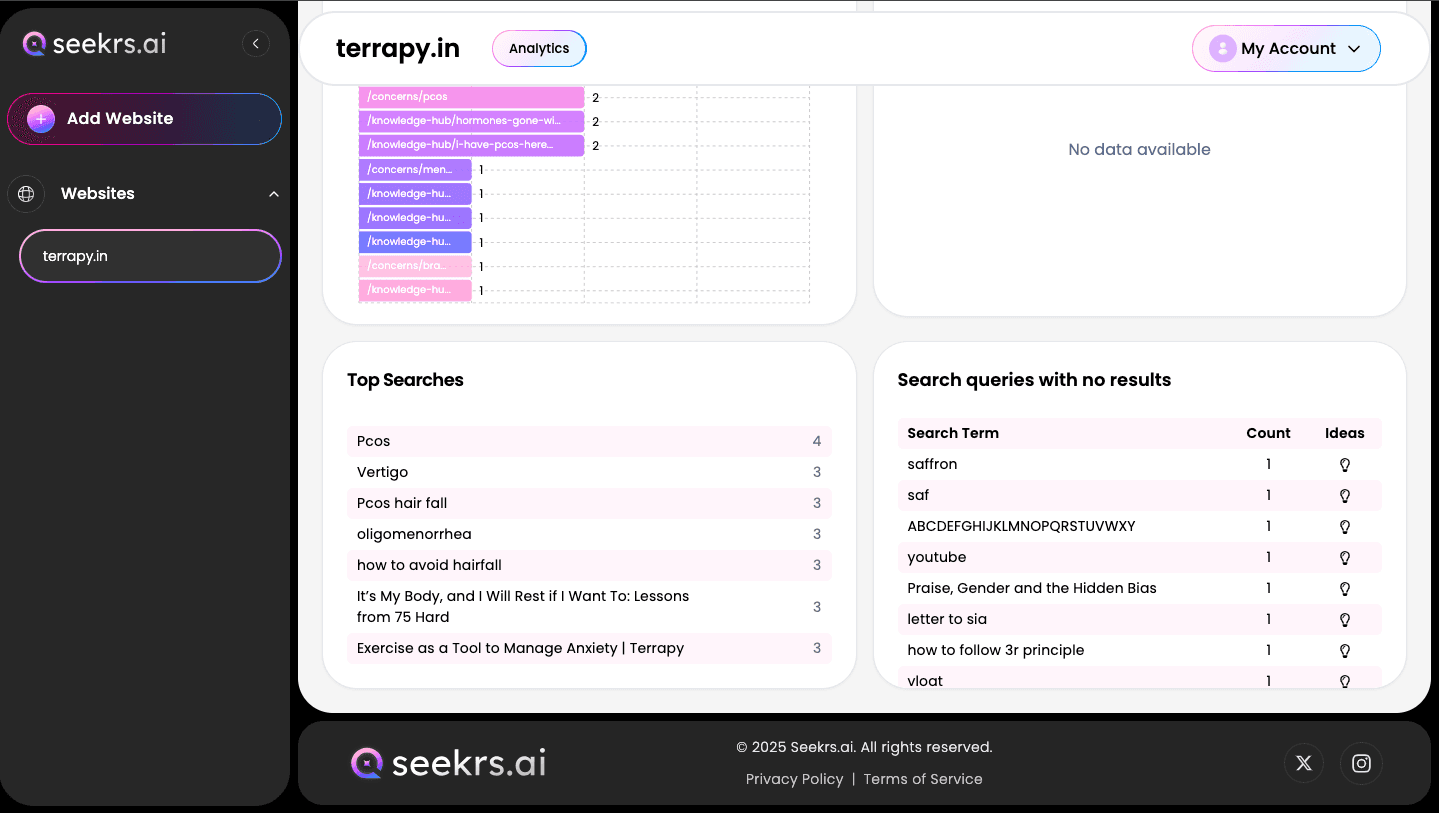This isn’t just a UX issue. It’s a performance issue.
Modern users don’t navigate. They query. And increasingly, they expect your search bar to behave like a conversation, not a filing cabinet.
With semantic search, you can meet that expectation — and you can implement it in less than an hour.
What’s Wrong with Traditional Search?
Most websites still use literal keyword matching, often hardcoded into a CMS plugin or layered on top of a product catalog. These systems:
- Can’t handle natural language queries
- Ignore synonyms, typos, or phrasing variations
- Return irrelevant or zero results for intent-based searches
This directly impacts user retention.
Take Terrapy, a wellness-focused D2C brand. Before switching to semantic search, their on-site engagement rate hovered around 40% — a risky number when you’re paying to bring people in. After implementing intent-aware search, we lifted that to 55%.
That’s not a cosmetic change — for a brand operating on tight CAC–LTV margins, that’s survival.
What Makes Semantic Search Different?
Semantic search uses vector-based embeddings to understand meaning, not just text. So a query like:
“Therapy for social anxiety in Mumbai”
...doesn’t need to match a blog post or product page word-for-word. It finds content about therapy types, relevant providers, articles on anxiety — even if those exact terms aren’t used.
More importantly, it gives you insight into how your users think, which becomes invaluable once you scale content and inventory.
Implementing Semantic Search in 4 Practical Steps
Here’s how we typically deploy a solution like Seekrs.ai for clients — in a way that works within existing tech stacks, without disrupting frontend logic or backend structure.
Step 1: Define What You Want to Index
Start with clarity.
Decide what surfaces you want searchable — landing pages, blog content, product pages, guides, documentation. Don’t blindly crawl everything.
At Terrapy, we excluded category pages and meta tags, and focused the search on:
- Therapist listings
- Topical blog posts
- Guided programs
This ensured results were relevant and human-readable — not just machine-matched.
Step 2: Set Up Your Content Source (API or Crawler)
You have two integration paths:
- Crawler: Fastest to set up. Ideal for public sites or marketplaces.
- API-based upload: Better control. Useful for gated content, logged-in experiences, or structured catalogs.
Most teams choose the crawler for speed, then refine later via API as their use case matures.

Step 3: Add the Search Widget to Your Frontend
Seekrs provides embeddable JS or React components that can be dropped into your site in minutes. Placement matters.
In Terrapy’s case, we added the search bar to the homepage hero and repeated it on content-heavy landing pages. Search queries rose by over 40% in the first week — without any UI redesign.

Step 4: Test Real Queries and Analyze Content Gaps
This step is often ignored — and that’s where semantic platforms give you a hidden advantage.
With Seekrs, once users start searching, the dashboard shows:
- What users are searching for
- What you can’t answer yet (queries returning no or low-quality results)
- Emerging topics you haven’t created content for
This turns search into a content strategy engine.
At Terrapy, seeing repeat queries around “panic attack vs anxiety” helped prioritize new content topics for the editorial team.

What Changes After Go-Live?
You won’t need to wait weeks to see results.
In every implementation I’ve led, semantic search brings immediate shifts:
- Query length increases (users ask richer questions)
- Bounce rates decrease (they find what they came for)
- Content strategy sharpens (you know what’s missing)
And crucially: users stop treating the search bar as a last resort. It becomes the front door.
Closing Thoughts
Adding semantic search used to be an infrastructure decision. Today, it's a product one.
You can either keep guessing what your users want — or let them tell you, in their own words, and build a system that understands.
And if it takes less than 60 minutes to get there?
You’re out of excuses.
